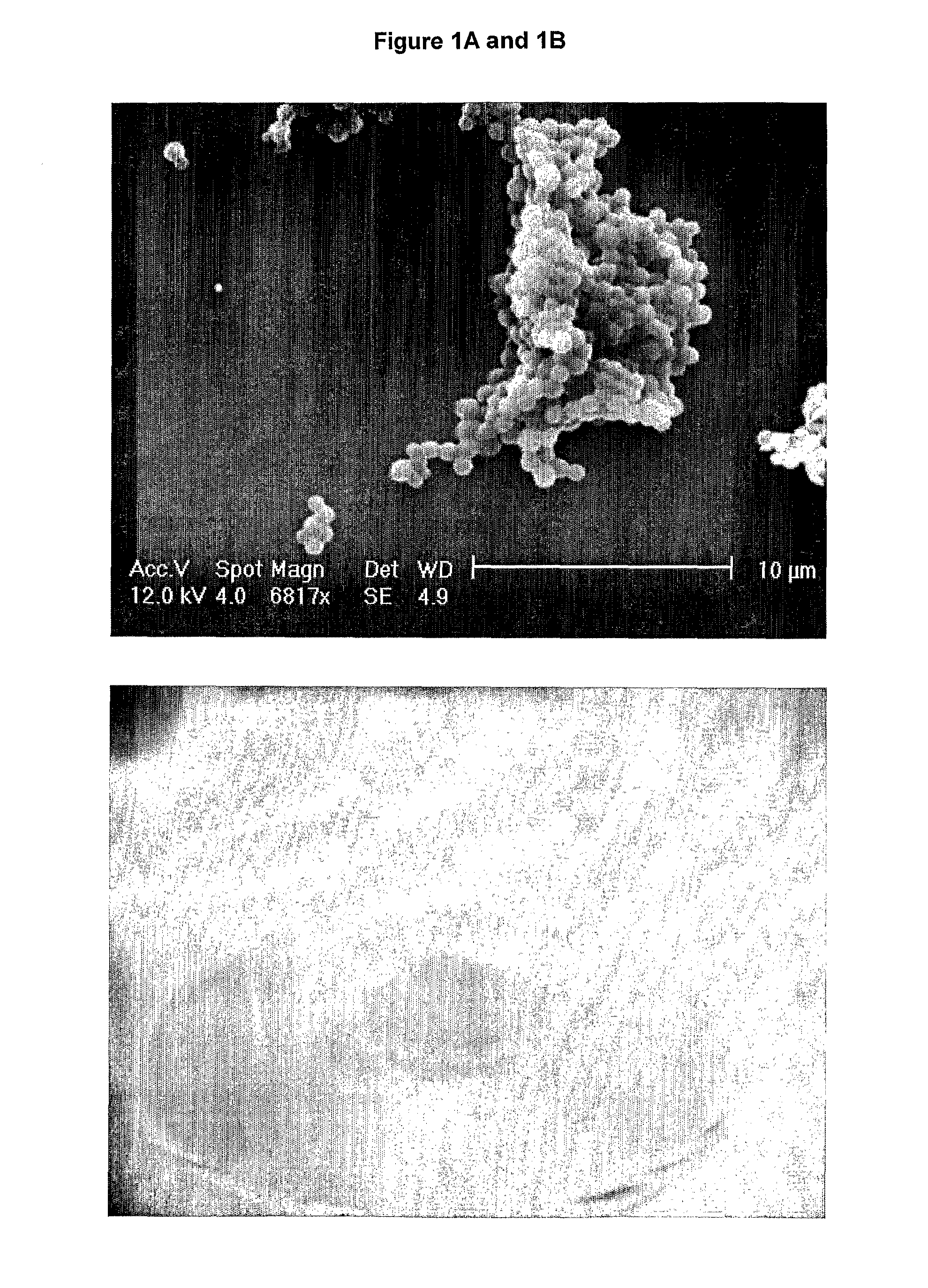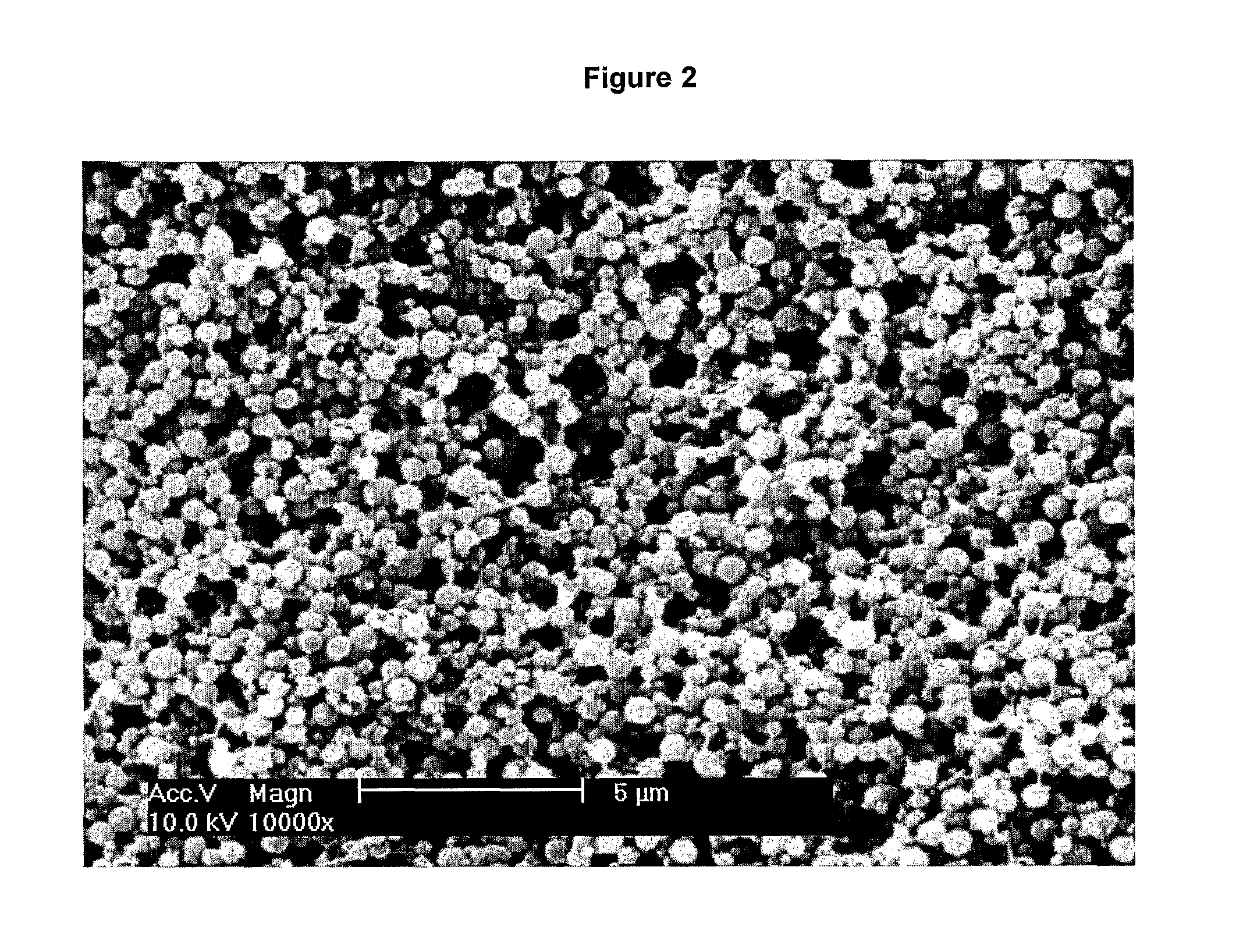Injectable biomaterials
a biomaterial and elastin technology, applied in the field of elastin and tissue repair and restoration using biomaterials, can solve the problem of inability to deliver elastin mass, and achieve the effect of reducing the coalescence of microparticles
- Summary
- Abstract
- Description
- Claims
- Application Information
AI Technical Summary
Benefits of technology
Problems solved by technology
Method used
Image
Examples
example 1
Production of Globules Formed from Tropoelastin at Low Tropoelastin Concentrations Using an Alkali Polymerisation Process
Materials & Methods
[0106]20 mg tropoelastin was dissolved in 10 mL Phosphate Buffered Saline (PBS) at 4° C. overnight (estimated 16 hrs) to provide a final tropoelastin concentration of 2 mg / ml. Keeping the solution on ice throughout, the starting pH of the solution was measured (pH 7.2) and 39 μL 1 M NaOH was added to take the pH of the solution to a value of 10.7. The resulting solution was then incubated at 37° C. for 4 h in a 15 mL tube before being removed from incubator and placed at room temperature.
Results
[0107]The microparticles produced tend to coat the side of the tube. An SEM image of a sample of the solution (FIG. 1A) shows the presence of microparticles with an estimated diameter of 1 μm. The spheres tend to aggregate together due to the ‘sticky’ nature of the elastin material.
example 2
Alkali Polymerisation of Tropoelastin in the Absence of a Coalescence-Controlling Agent at a Concentration of 10 mg / ml
Materials & Methods
[0108]50 mg tropoelastin was dissolved in 4.9 mL PBS at 4° C. overnight (estimated 16 hrs). Keeping the solution on ice throughout, the starting pH of the solution was measured (pH 7.22) and 47 μL 1 M NaOH was added to take the pH of the solution to a value of 10.7. An additional 53 μL of PBS was added to make a tropoelastin solution with a final concentration 10 mg / mL. The solution was then incubated at 37° C. overnight (16 hrs) in a 5 mL flat bottomed tube before being removed from the incubator and placed at room temperature.
Results
[0109]As can be seen in FIG. 1B the material produced was a solid elastic material that retained the shape of the tube it was prepared in. More than 4.5 mL of fluid separated from the resultant solid, suggesting the majority of the 50 mg Tropoelastin (>40 mg) was present in approximately 0.5 mL of liquid in the constr...
example 3
Production of Globules in the Presence of CMC as the Coalescence-Controlling Agent Using Chemical Cross-Linking
Materials & Methods
[0110]A stock solution 200 mg / mL Tropoelastin was produced by dissolving 300 mg Tropoelastin in 1.5 mL PBS overnight at 4° C. A stock solution of 2% (w / v) high viscosity carboxy methylcellulose (CMC; Sigma Cat No.C5013) was produced by dissolving 2 g CMC in 100 mL PBS with stirring overnight at room temperature.
[0111]Keeping the solutions on ice throughout, 250 μL of the stock Tropoelastin solution was mixed with 200 μL PBS and 500 μL of the 2% (w / v) CMC. A fresh vial of 25% (v / v) Glutaraldehyde (GA) solution was opened on ice and 2 μL 25% (v / v) GA was mixed with 48 μL PBS before being added immediately to the Tropoelastin solution. The resultant mixture of 50 mg / mL tropoelastin, 1% (w / v) CMC, 0.05% (v / v) GA was stirred using a cooled pipette tip (pipette tips were pre-cooled by placing at −20° C. overnight) prior to being incubated at 37° C. for 24 hours...
PUM
| Property | Measurement | Unit |
|---|---|---|
| concentration | aaaaa | aaaaa |
| diameter | aaaaa | aaaaa |
| diameters | aaaaa | aaaaa |
Abstract
Description
Claims
Application Information
 Login to View More
Login to View More - R&D
- Intellectual Property
- Life Sciences
- Materials
- Tech Scout
- Unparalleled Data Quality
- Higher Quality Content
- 60% Fewer Hallucinations
Browse by: Latest US Patents, China's latest patents, Technical Efficacy Thesaurus, Application Domain, Technology Topic, Popular Technical Reports.
© 2025 PatSnap. All rights reserved.Legal|Privacy policy|Modern Slavery Act Transparency Statement|Sitemap|About US| Contact US: help@patsnap.com



